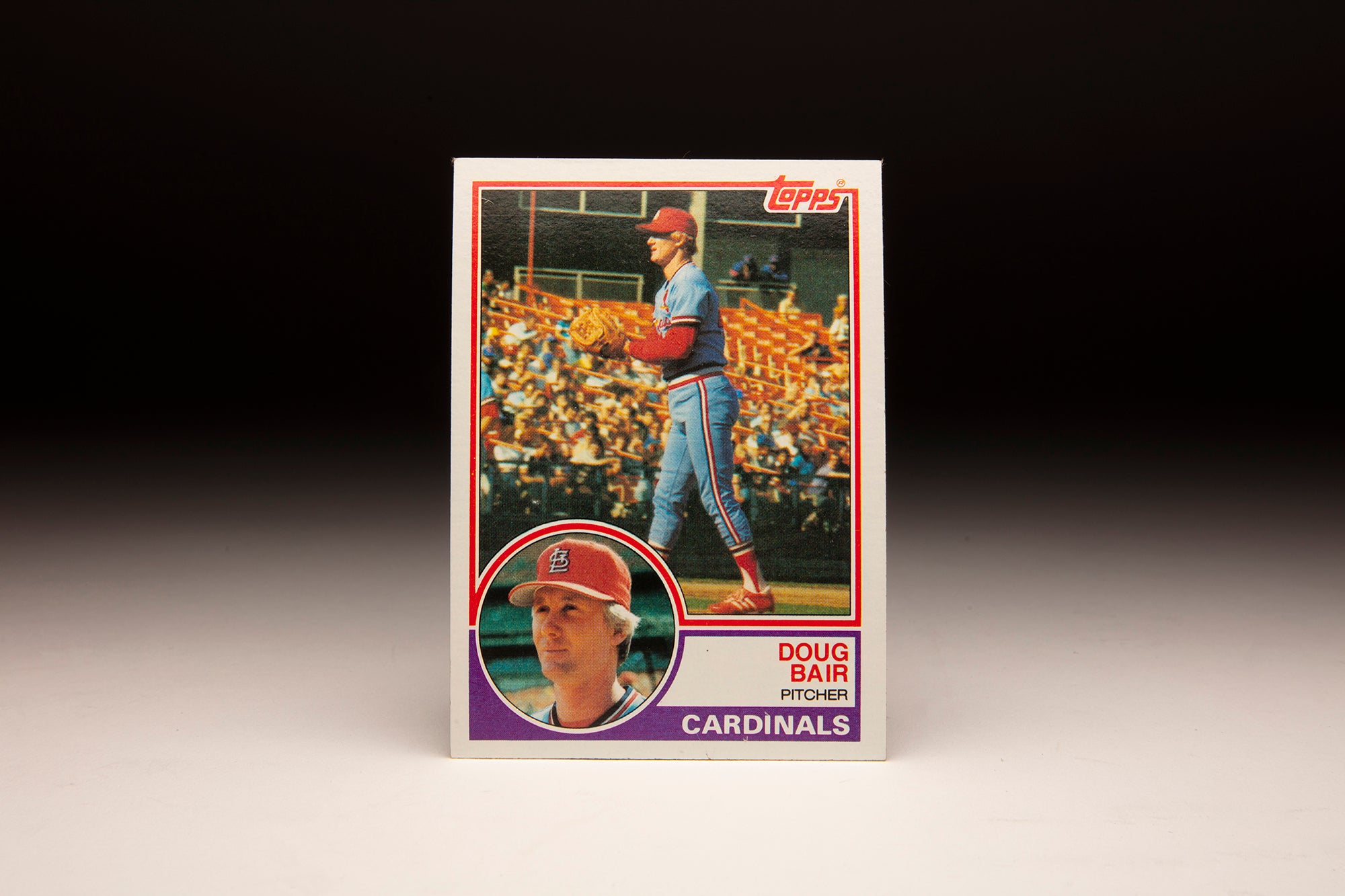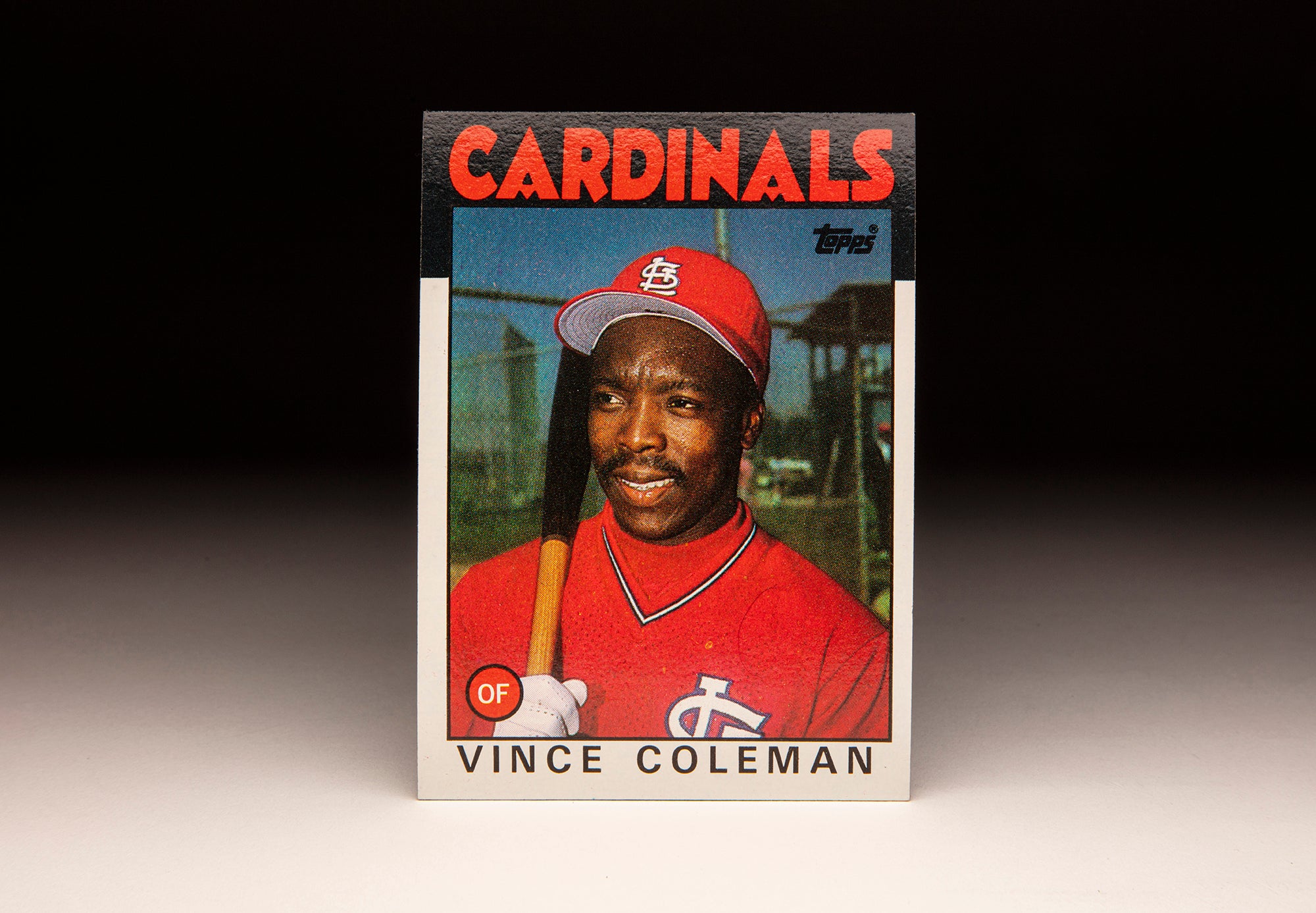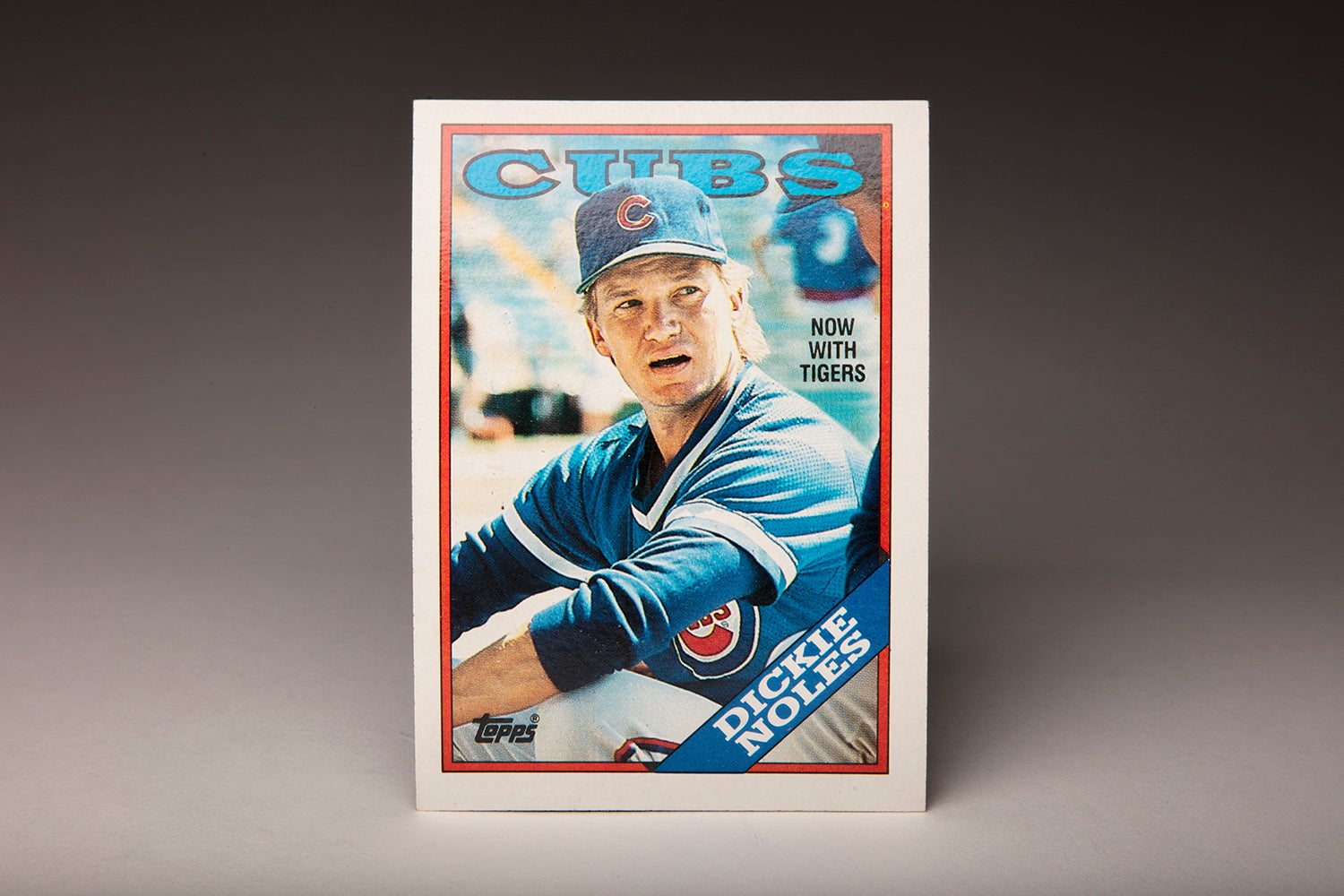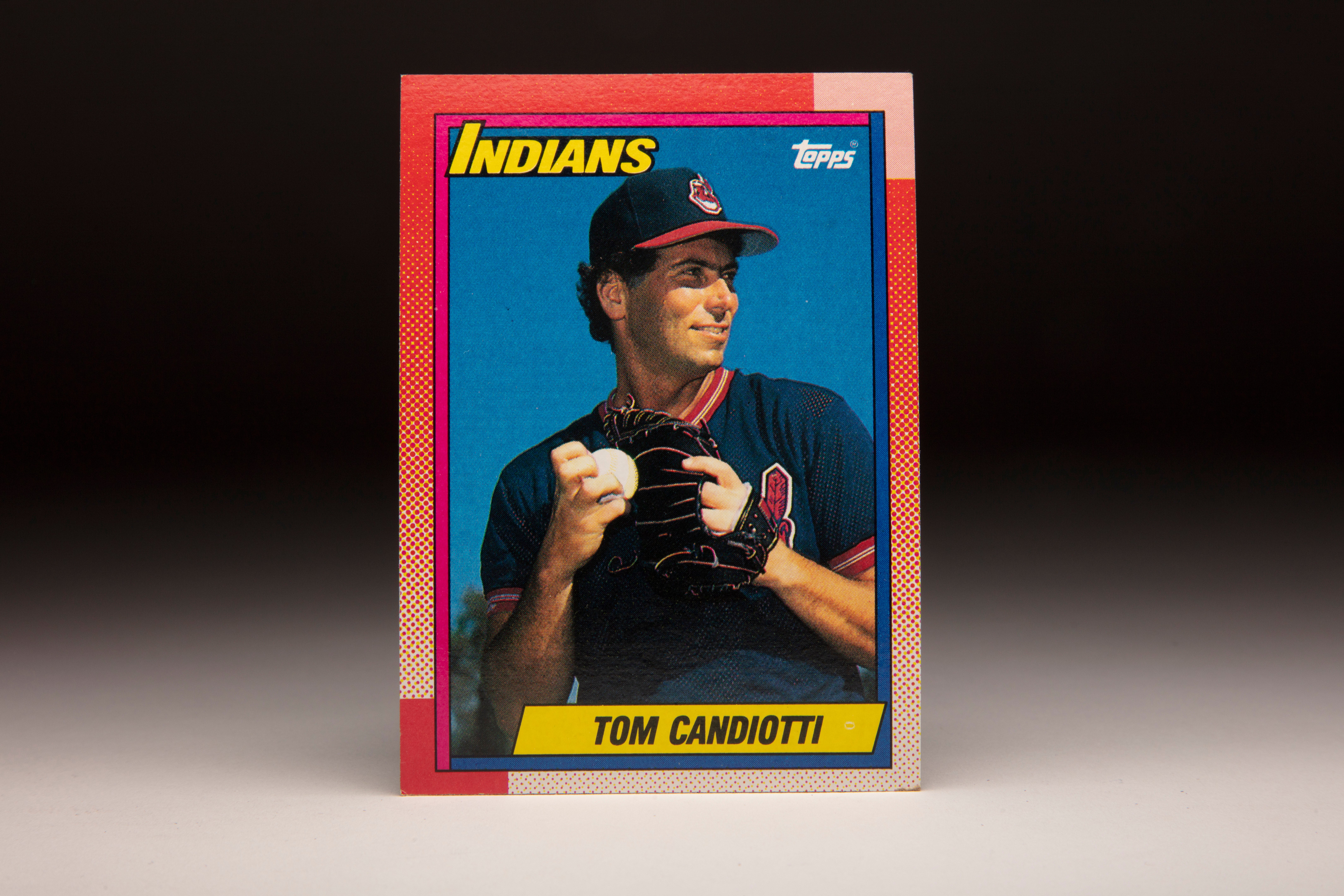#CardCorner: 1993 Upper Deck Roger McDowell
He was the winning pitcher in Game 7 of the 1986 World Series and later one of the most respected pitching coaches in the game.
But Roger McDowell’s most enduring legacy might be his comedic one – which included on-field pranks and an off-the-field cameo in one of TV’s most beloved sitcoms.
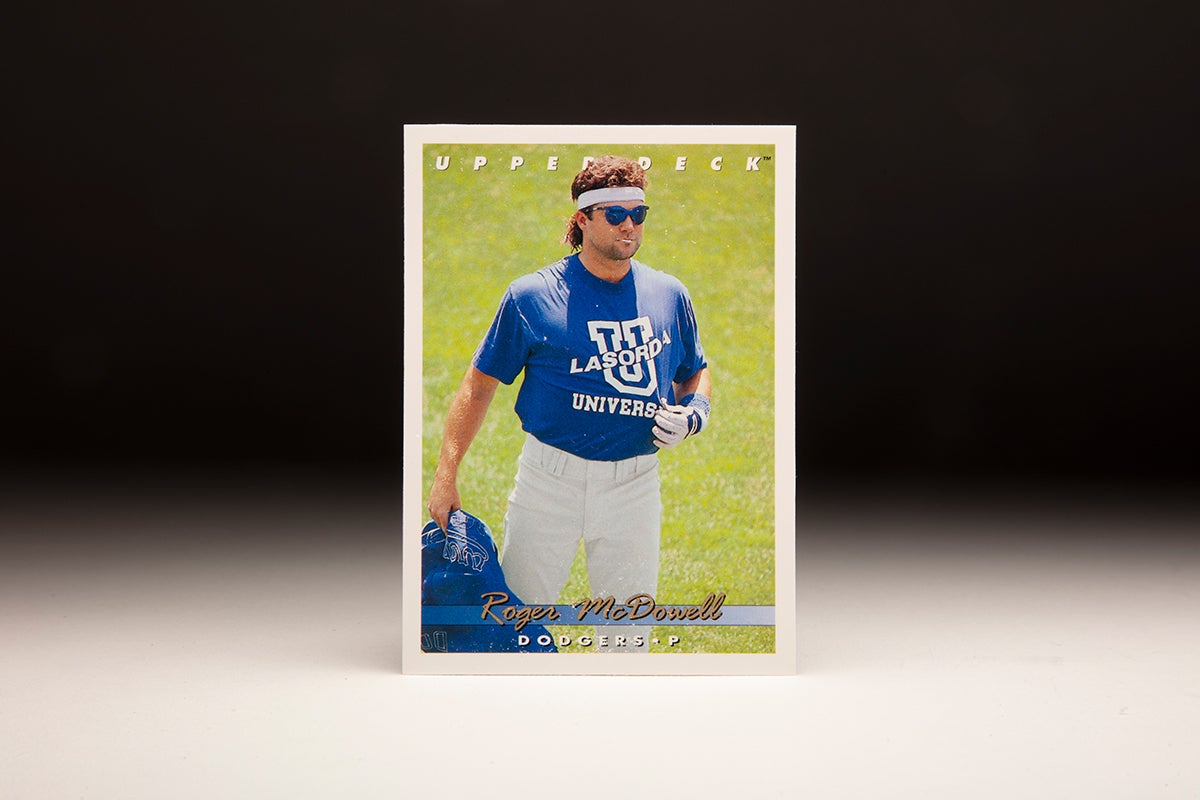
Born Roger Alan McDowell on Dec. 21, 1960, in Cincinnati, Ohio, the lanky right-hander went undrafted after high school despite possessing a sinking fastball that he could throw for strikes at will. He enrolled at Bowling Green State University in northwest Ohio and pitched for three years for the Falcons, earning first-team All-Mid-American Conference honors as a junior after going 5-4 with a 4.27 ERA.
The Mets selected McDowell in the third round of the June 1982 MLB Draft with the 59th overall pick, making McDowell the second-highest draft pick ever from Bowling Green following Doug Bair’s selection by the Pirates with the 46th pick in the 1971 draft. Mets scout Bob Wellman convinced McDowell to bypass his senior season and sign with the Mets, and he was assigned to Class A Shelby of the South Atlantic League.
As he did in high school and college, McDowell rode his sinking fastball as far as it would take him.
“Nobody really taught me the pitch,” McDowell told the Central New Jersey Home News in 1985. “It’s really my natural fastball. When I was in high school, an older man who had a summer team in Cincinnati thought that to help me get more movement on my fastball I should be holding the ball on the two narrow seams.
“I wasn’t a power pitcher in high school – I weighed only 110 pounds and was 5-foot-8 – and that’s the way I held it ever since. For the last three or four years, it’s been really sinking for me.”
McDowell was 6-4 with a 3.28 ERA over 12 appearances (11 starts) with Shelby when he was promoted to Class A Lynchburg, where he was 2-0 with a 2.15 ERA in four starts. For the season, he allowed just one home run over 100.2 innings.
McDowell began the 1983 season on a high note for Double-A Jackson of the Texas League, no-hitting Tulsa for 6.1 innings on April 8 until the Drillers’ Chuck Canady broke up the gem with a seventh-inning single. McDowell picked up the victory while striking out nine batters.
“No-hitter or not, McDowell was coming out of the game after seven innings,” Jackson manager Bob Schaefer told the Tulsa World on an evening that featured 40-degree temperatures in Oklahoma.
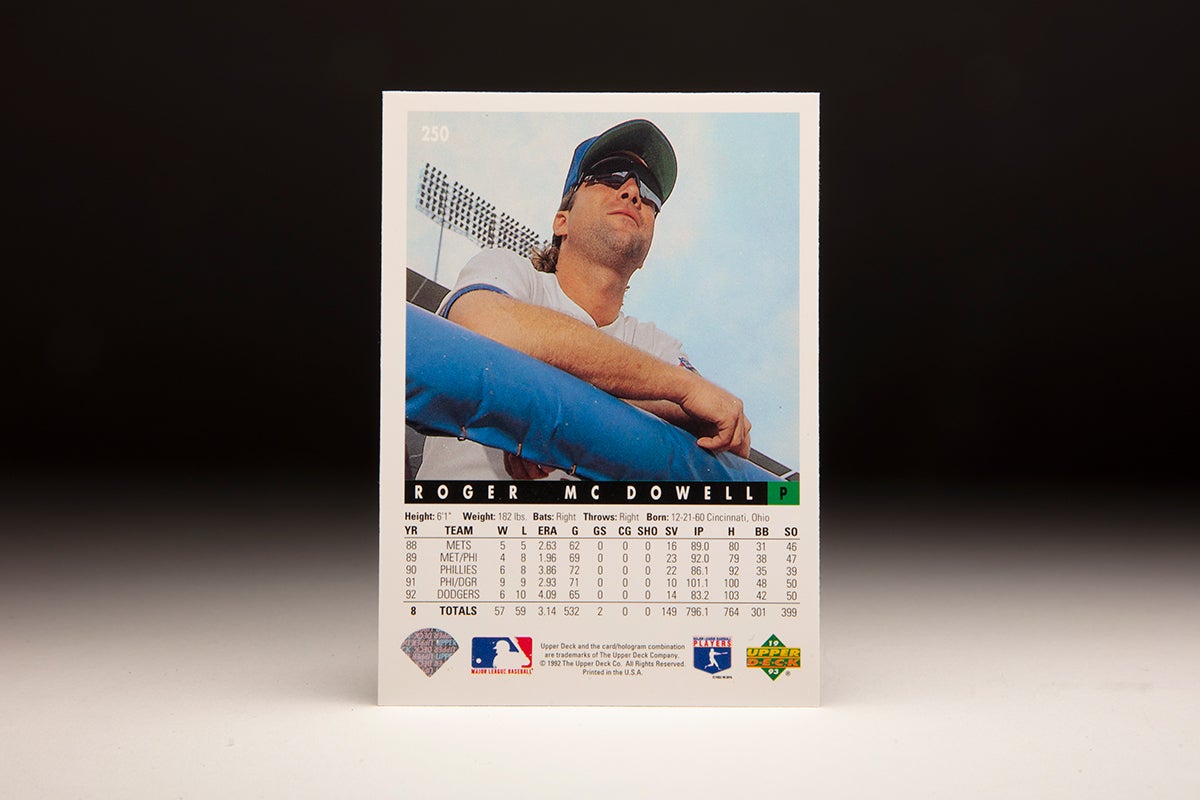
McDowell remained among the Texas League leaders in innings pitched for most of the 1983 season but was bothered by a sore elbow. He finished the year with an 11-12 record and 4.86 ERA in 172.1 innings. Then on Feb. 11, 1984, McDowell underwent surgery to remove 12 bone chips and three bone spurs from his right elbow and appeared in only three games that season with Jackson. But he pitched well in the Florida Instructional League following the season and earned a spot on the Mets’ 40-man roster heading into Spring Training of 1985.
“Looking at the starting pitching staff and who the Mets had here last year in the bullpen, realistically, I didn’t feel I would be (with the Mets when the season started),” McDowell told the Central New Jersey Home News. “But I went to Spring Training with the idea I was going to make the team.”
McDowell beat the odds and made the Mets’ Opening Day roster. He pitched six scoreless innings over four appearances to start his career, notching two victories. Manager Davey Johnson then moved McDowell to the rotation for two starts April 28 and May 4, and McDowell surrendered a combined nine earned runs over 10.1 innings.
But when starter Calvin Schiraldi broke his little toe on his right foot on May 14 against the Braves, McDowell entered the game and tossed 4.2 scoreless innings to pick up the win.
From that point on, McDowell was a reliever – and never started another game in his big league career.
“That way I can use him twice in five days instead of once,” Johnson told the Associated Press about moving McDowell to the bullpen. “His ball doesn’t sink as much after about five innings.”
Relying on his sinker while mixing in a slider and change-up, McDowell worked 21 scoreless innings over seven appearances from May 11-29 – working multiple innings in almost every outing. In 62 games that season, McDowell worked 127.1 innings – making only 20 appearances where he worked one inning or less.
He finished 6-5 with a 2.83 ERA and was sixth in the National League Rookie of the Year voting.
“Coming off the arm surgery he had last year and to be able to throw with the kind of velocity he has is amazing,” Mets catcher Gary Carter told the Central New Jersey Home News about McDowell during the 1985 season. “And that sinker of his – it’s just devastating. When (Carter’s former Expos teammate) Steve (Rogers) was in his prime, he had a sinker similar to that, but it probably didn’t drop as much.
“The thing about Roger is he can throw his sinker, a batter can know it’s coming and there are guys who are still not laying a bat on it.”
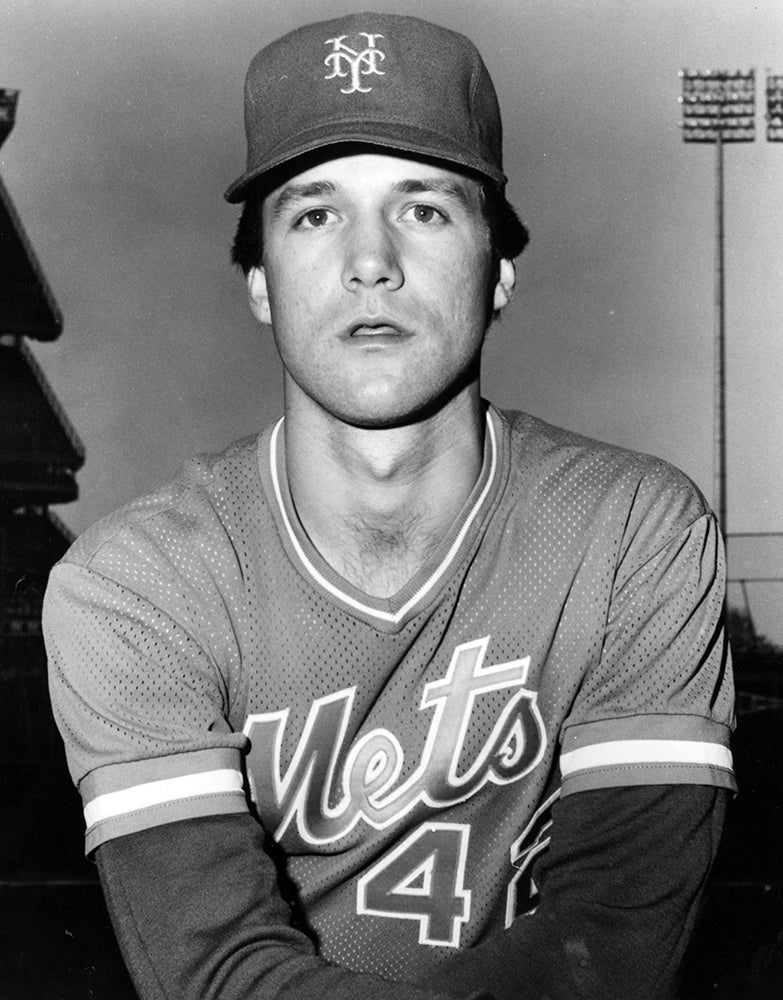
The Mets won 98 games in 1985 but finished second to the Cardinals in the NL East. But in 1986, New York notched 108 wins as McDowell and lefty Jesse Orosco shared a platoon closer role that saw McDowell go 14-9 with 22 saves in 128 innings over 75 games. Orosco went 8-6 with 21 saves.
“It’s hard to realize I’m part of this,” McDowell told the Dayton (Ohio) Daily News during the 1986 postseason. “Two years ago, I was in the minors coming off an arm operation. I didn’t know whether I’d ever pitch in the majors.”
McDowell made his postseason debut with two shutout innings in Game 4 of the NLCS vs. the Astros – a contest where Mike Scott pitched Houston to a 3-1 win that tied the series at two games apiece. It was a welcome change for McDowell, who had allowed 10 hits, five walks and four runs against the Astros in 8.2 innings during the 1986 regular season.
Then in Game 6 with the Mets one win away from the World Series, Johnson called on McDowell in the bottom of the ninth after New York scored three runs in the top of the frame to tie the game at 3. McDowell retired the first 10 batters he faced and pitched five brilliant innings, allowing just one hit as the game remained tied going into the top of the 14th. The Mets scored a run to put McDowell in line for the win, but Billy Hatcher’s home run off Orosco tied the game.
The Mets scored three times in the 16th but a tiring Orosco allowed two runs in the bottom of that inning before striking out Kevin Bass with the go-ahead runs on base to preserve a 7-6 win and send New York to the World Series.
“Roger McDowell gave us some great relief,” Johnson told the Corpus Christi (Texas) Times after Game 6, “against a club which has given him trouble. The pitching has been outstanding.”
In the Fall Classic against the Red Sox, McDowell pitched two scoreless innings in both Game 1 and Game 3 but allowed two runs in two-thirds of an inning in Game 4. Orosco, however, slammed the door to preserve the Mets’ 6-2 win and tie the series at two games.
But Boston won Game 5 and Game 6 was tied at 2 entering the seventh inning when Johnson called on McDowell. A walk, a ground out, an error and another ground out produced a run that gave the Red Sox the lead, but McDowell got off the hook when the Mets tied the game in the bottom of the eighth.
That set the stage for the epic 10th inning when Boston took a 5-3 lead before the Mets rallied to win 6-5 when Ray Knight scored on Bill Buckner’s error.
After appearing in three games over five days, McDowell got a breather when Game 7 was rained out on Oct. 26. The next day, the game was tied at 3 in the top of the seventh when McDowell entered and retired the Red Sox in order. New York scored three runs in the bottom of the seventh to take a 6-3 lead before a tiring McDowell allowed two runs before retiring a batter in the eighth. But Orosco relieved and prevented any further damage, and the Mets tacked on two runs in the bottom of the eighth to take an 8-5 lead.
Orosco then retired the Red Sox in order in the ninth to wrap up the title for the Mets.
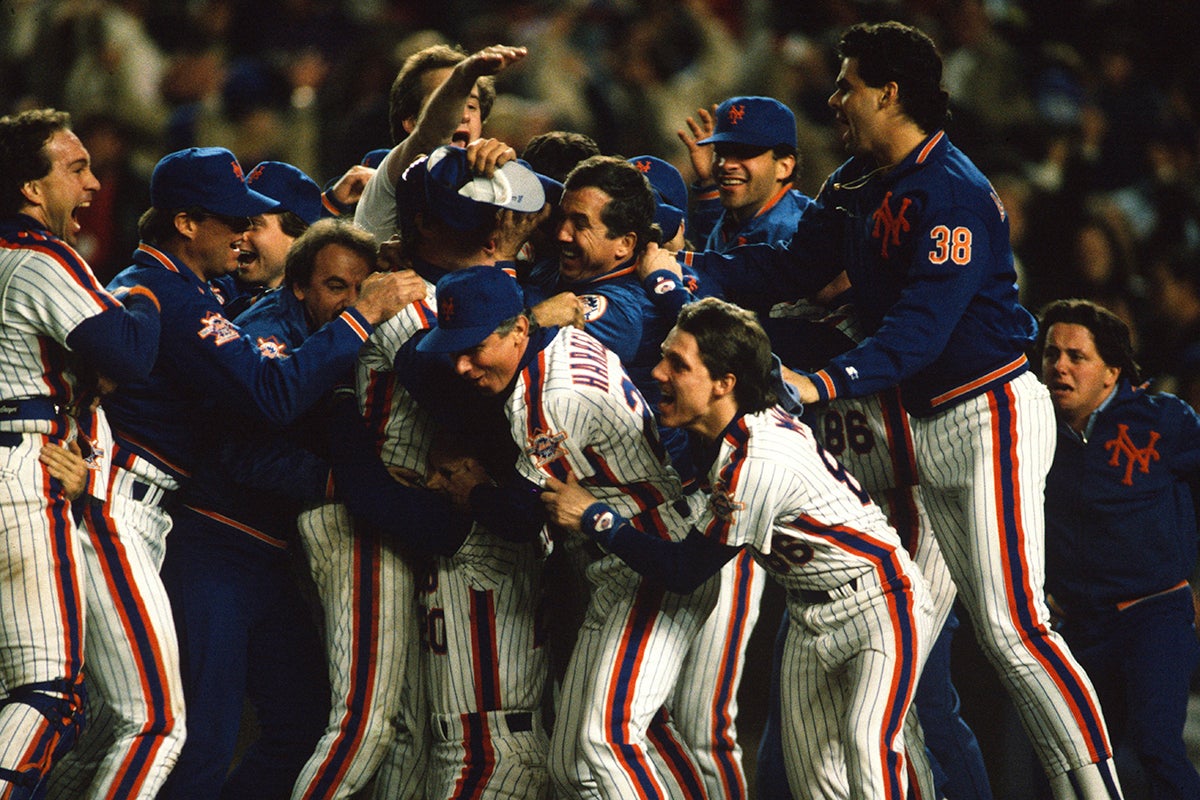
“The thing is I had faith in my bullpen all year and I felt the same way about those guys in the Series,” Johnson told The Morning Union of Springfield, Mass., after Game 7. “Certain guys did it on certain nights. No matter, they did what had to be done.”
McDowell received down-ballot support in the National League Most Valuable Player balloting following the 1986 season, and the Mets entered the late 1980s as a trendy pick to become baseball’s next dynasty. That didn’t happen, but McDowell and the Mets enjoyed their run at the top and became one of baseball’s most fun-loving teams.
McDowell was often at the center of the action, and his legendary hotfoots became well-known throughout the league. He often targeted first base coach Bill Robinson, and his Mets teammates got revenge at one point by setting McDowell’s shoes on fire at the top of the dugout steps. McDowell also made headlines by wearing his uniform top upside down during a game at Dodger Stadium.
And when he was with the Phillies, McDowell victimized teammate Chuck McElroy on Opening Day in Chicago by convincing McElroy to “sound” a two-headed horn on the bench. McDowell filled the horn with baby powder, which ended up all over McElroy.
“(McElroy) cracked up,” McDowell told the Cincinnati Enquirer. “And so did everybody else.”
Then in 1992, McDowell made an appearance in a Seinfeld episode that parodied the Abraham Zapruder film that chronicled the assassination of United States President John F. Kennedy. McDowell also appeared on MTV programs.
Back on the field, the Mets suffered from a World Series “hangover” in 1987 and won just 92 games. McDowell missed all of April and half of May after undergoing hernia surgery but still led the club in saves for the second straight season with 25 while going 7-5 with a 4.16 ERA in 56 games.
Then in 1988, the Mets returned to the top of the NL East by winning 100 games. McDowell was in peak form with a 5-5 record, 16 saves and a 2.63 ERA in 62 games but was supplanted as the main closer by young left-hander Randy Myers, who posted a 1.72 ERA and 26 saves.
The Mets entered the NLCS heavily favored against the Dodgers but ran into Orel Hershiser, who was authoring one of the greatest postseason stretches in history. McDowell appeared in four games in a row – Games 2 through 5 – and allowed runs in three of them, taking the loss in Game 4 when he surrendered Kirk Gibson’s go-ahead home run in the top of the 12th before Hershiser came out of the bullpen to close the game in the bottom of the inning.
McDowell allowed one run over two innings in Game 5, which would prove to be the last postseason appearance of his career. The Dodgers went on to win the series in seven games.
McDowell was inducted into the Bowling Green Athletic Hall of Fame in early 1989 before his career path would take a drastic turn a few months later. The Mets got off to a slow start that year and were hanging around the .500 mark when general manager Frank Cashen swung a blockbuster deal that sent McDowell, Lenny Dykstra and a player to be named later who turned out to be pitcher Tom Edens to the Phillies in exchange for Juan Samuel. McDowell was 1-5 with four saves and a 3.31 ERA at the time of the trade but pitched some of the best baseball of his career with the Phillies in the final months of the season, going 3-3 with 19 saves and a 1.11 ERA in 44 games.
Dykstra, meanwhile, hit just .222 for the Phillies that year but blossomed into one of the game’s top leadoff hitters the year after, leading the NL with 192 hits and a .418 on-base percentage. He would post even better numbers in 1993 while leading the Phillies to the National League pennant.
Samuel on the other hand struggled in New York and was traded to the Dodgers following the 1989 season.
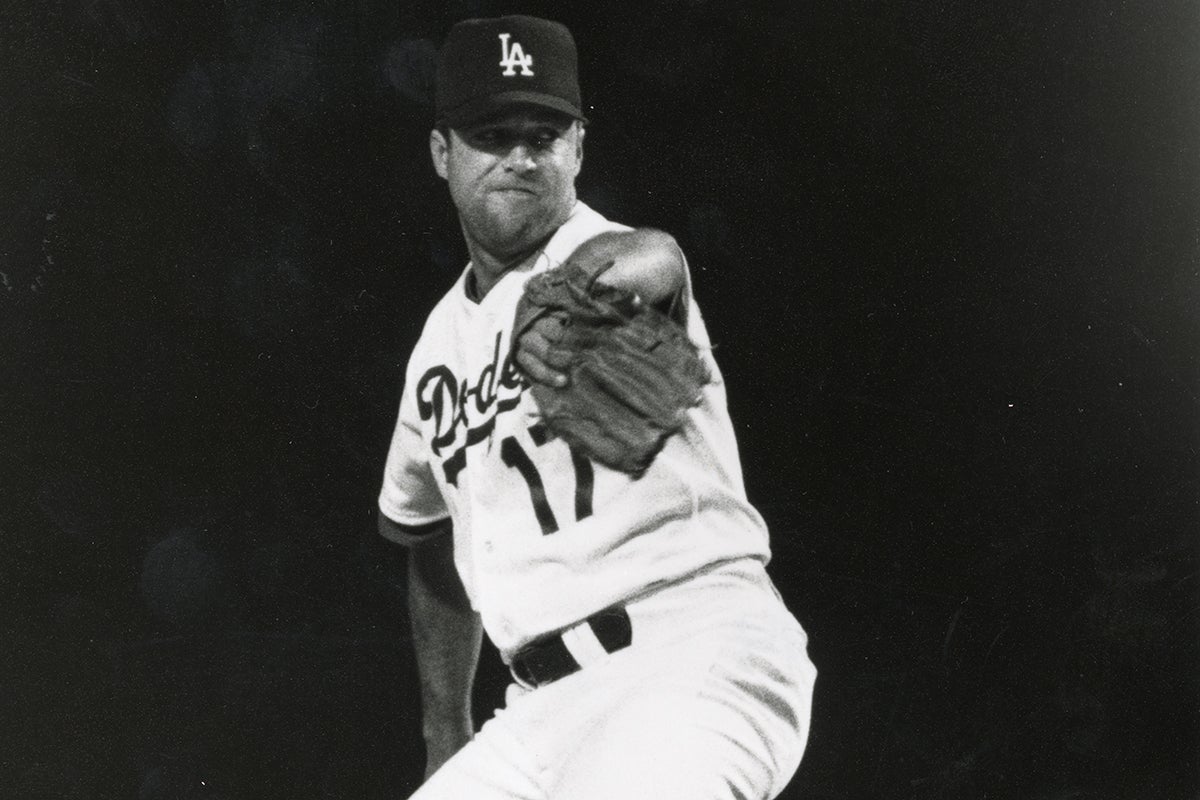
As for McDowell, he signed a three-year extension with the Phillies worth a reported $6 million on Jan. 16, 1990.
“Roger McDowell can last a long time,” Phillies general manager Lee Thomas told the Philadelphia Daily News after McDowell’s new deal was announced. “Roger McDowell may not have even reached his prime yet.”
For his part, McDowell was happy to stay in Philadelphia, where he was no longer the lead prankster in the clubhouse.
“I want to get away from being known as the so-called class clown,” McDowell told the Daily News. “I think I have a lot of productive years left, and sometimes that kind of got lost in the clubhouse humor thing. Heck, John Kruk is probably more of a clubhouse clown than I am.”
McDowell was 6-8 with 22 saves and a 3.86 ERA in 72 games in 1990 – including an NL-leading 60 games finished – as the Phillies went a disappointing 77-85. Then, one day before the 1991 season opener, the Phillies traded for Mitch Williams and installed him in the closer’s role.
With McDowell now an expensive luxury as a set-up man, the Phillies traded him to the Dodgers on July 31 in exchange for Braulio Castillo and Mike Hartley.
“I think he was shocked,” Thomas told the Daily News of McDowell’s reaction to the trade. “He said: ‘It’s not April Fools, is it?’ He thought we were joking with him, because he jokes a lot with us.”
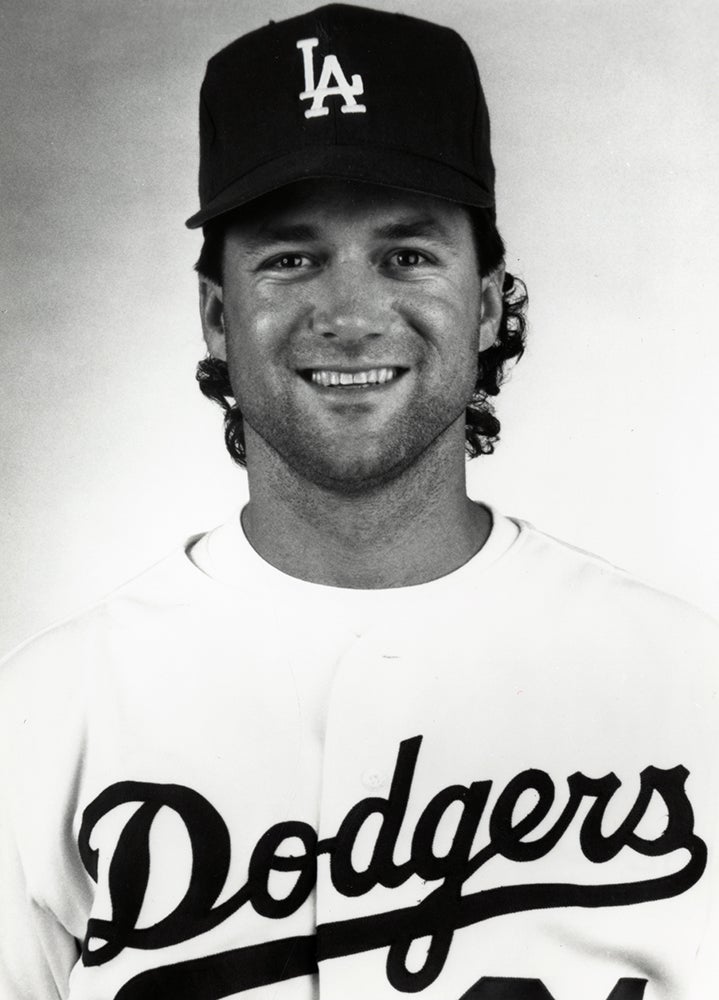
McDowell finished the season with a 9-9 record, 10 saves and a 2.93 ERA in 71 games. He endured the Dodgers’ 99-loss season in 1992 (the team’s first last-place finish since 1905) while going 6-10 with 14 saves and a 4.09 ERA in 65 appearances before agreeing to a two-year, $3 million deal to remain in Los Angeles on Dec. 5, 1992.
Settling into a middle relief role, McDowell was 5-3 with two saves and a 2.25 ERA in 54 games in 1993 before going 0-3 with a 5.23 ERA in 32 games in the strike-shortened 1994 campaign. When the work stoppage ended the following spring, McDowell signed a one-year deal with the Rangers worth a reported $500,000 on April 11, 1995.
McDowell was realistic about his role with his new team at this point in his career.
“Let’s face it, it’s not like they signed Christy Mathewson,” McDowell told the Fort Worth Star-Telegram. “I’m just a guy who goes out there and pitches 75 ballgames and pitches five days a week. If that opportunity comes along to close, hopefully I’ll succeed. If not, I don’t deserve to be in the role of closer.”
McDowell went 7-4 with four saves and a 4.02 ERA in 64 games in 1995 before once again becoming a free agent. This time, McDowell signed a one-year deal with the Orioles worth $750,000. But the 1996 season proved to be the one where McDowell’s durable arm finally showed signs of wear. Reunited with manager Davey Johnson and new Orioles closer Randy Myers, the 35-year-old McDowell appeared in 31 games in the season’s first three months before a sore right shoulder limited him to just 10 appearances from July 1 through the end of the season.
McDowell underwent arthroscopic surgery on his shoulder in September and then signed with the White Sox on a minor league deal in January of 1997. But toward the end of Spring Training, McDowell’s shoulder tightened up and he submitted to more surgery, missing the entire season.
He tried to pitch again in the spring of 1998 for the White Sox but managed only one inning in one Spring Training game before announcing his retirement on March 16. He immediately accepted an offer to work with White Sox’s pitchers at extended Spring Training.
“I am very appreciative for the opportunity to stay in the game as an instructor,” McDowell told United Press International. “I appreciate the chance the White Sox and (general manager) Ron Schueler provided to try and continue to play the game.”
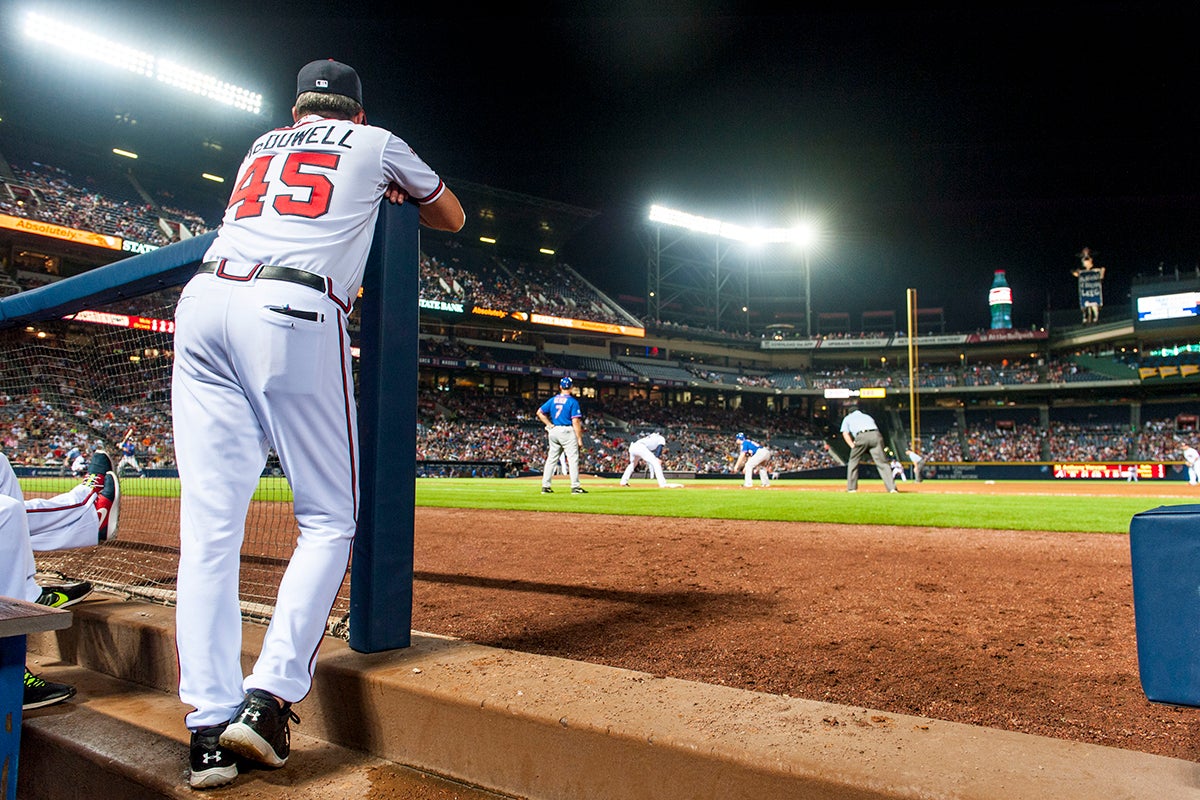
McDowell needed little time to adjust to his new role in retirement. He ascended to the job of pitching coach for the White Sox’s Double-A team midway through the 1998 season but soon quit to try his hand at celebrity pro golf. When that didn’t work out, he joined the Dodgers’ community relations team before becoming a minor league pitching coach, working his way up to Triple-A Las Vegas in 2004. Following the 2005 season, the Braves hired McDowell to replace legendary pitching coach Leo Mazzone.
“It’s kind of like an intern getting the job as vice president of U.S. Steel,” McDowell told the Atlanta Constitution of his quick rise to the big league coaching ranks.
McDowell remained as the Braves pitching coach through the 2016 season before serving in the same role with the Orioles in 2017 and 2018.
McDowell pitched for 12 seasons in the big leagues, totaling 70 wins against 70 losses and 159 saves with a 3.30 ERA in 723 games. Remembered by many for his fun-loving antics, McDowell had what many believe to be the perfect temperament for a bullpen ace.
“Roger has the ability and the mind to do what he does,” Mets ace Dwight Gooden told the Dayton Daily News in 1986. “He doesn’t take the game home with him at night and worry about it. He likes to come in there with the game on the line.”
Craig Muder is the director of communications for the National Baseball Hall of Fame and Museum

